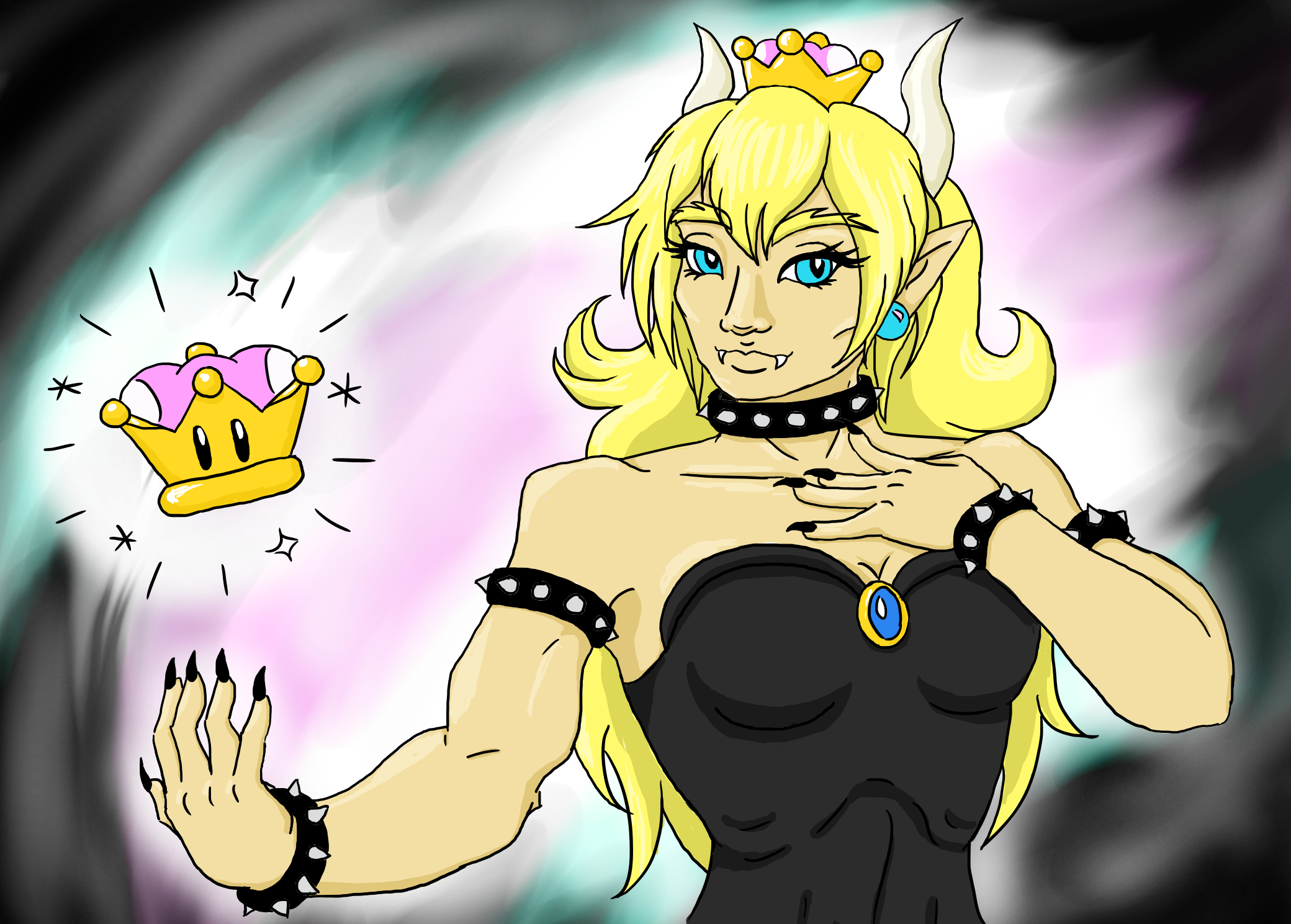If you’re on pretty much any social media at all, your last few weeks have probably featured a familiar, yet baffling figure. Among English-speakers, she is known most commonly as Bowsette: in Japan, she’s referred to as Koopa-hime or Princess Koopa. Whatever you call her, she’s still constructed around the same concept. The legendary Super Mario villain Bowser is now a princess, combining Bowser’s traditional design with that of Princess Peach. But why is she here? More importantly: why is she so popular?
On September 13th, Nintendo ran a new trailer for the upcoming New Super Mario Bros. U Deluxe on Nintendo Direct. Said trailer featured the Super Crown, a new power-up item for Toadette (the female counterpart to Toad) that allows her to transform into Peachette, a female Toad princess reminiscent of Princess Peach. Six days later, Twitter user @ayyk92 posted a comic on their account in which Peach turns down both Mario and Bowser’s affections: the heartbroken Bowser activates a Super Crown, transforms into a black-clad, spikier version of Peach and walks off with Mario. The comic quickly started spreading: as of writing this, the original comic is closing in on 200,000 likes and has surpassed 85,000 retweets on Twitter. The comic’s creator, Malaysian artist Haniwa, has seen his Twitter follower count increase by a hundredfold. #クッパ姫, ”Koopa-hime”, was the top trending hashtag on Twitter in Japan. There’s a KnowYourMeme page and Wikipedia entries in English, German and Chinese. Bowsette is leaving her mark.
Since the ”what” of Bowsette is rather briefly explained, it might be more fruitful to question why her popularity was so sudden and so widespread. A good hypothesis would be the iconic standing that the Super Mario franchise holds in the hearts of gamers of all kinds. It’s a game series that is quite possibly impossible to avoid if you’ve invested any amount of time into gaming. The most famous of its characters – Mario, Peach, Bowser – are easily identifiable and familiar to gamers of all ages all around the world. For some, Bowsette is an intriguing new variant of a familiar character, a breath of fresh air but still with the security of nostalgia. Some people see Bowsette as a fun design concept to transfer onto other characters: there are already Waluigettes, Booettes, and even characters from other franchises like Sonicette floating around. There are countless variations on Bowsette herself, catering to the preferences of whoever created them, ranging from muscular and monstrous to soft and feminine. Since Bowsette is a fan creation ungoverned by canon, she can be whatever whoever is depicting her (whether through cosplay, a game mod, or fanart) and yet the touchstone of familiarity is not lost.
Though people from all walks of life have shown their appreciation for this new variation on a classic character, there is one group in particular that finds something intensely relatable in the narrative of Bowsette’s transformation: transgender women. The phenomenon known as queer coding led to countless villain characters over the past few decades being coded as queer (countless articles have been written f.ex. on the queer-coding of Disney villains). This led to members of the LGBTQ+ community often finding villains to be the most relatable characters for them, and the same goes for Bowsette. Some trans women have expressed that Bowsette’s transformation is a similar narrative to what they expressed having gone through when they transitioned and found that instead of grumpy, unapproachable or unhappy men, they were women – and still themselves, just without the added difficulty of the world treating them as someone they weren’t.
Is there a ”real” Bowsette? When discussing fanworks, there is rarely one singular truth. Though Haniwa posted the first version of what became a phenomenon, he has not claimed ownership of Bowsette – which is just as well, since attempting to claim transformative works as your own intellectual property rarely goes over well with the owners of the original property. He’s even posted his own variations on the original design of Bowsette he posted. As is usually the case with fanworks, though fandom-favored interpretations of characters may exist, variation still inevitably crops up as people display their own preferences, thoughts, dreams, life stories, and artistic styles through their fanwork.
Incidentally, since the beginning of the writing of this article, not only has Nintendo officially commented ”no comment” on Bowsette, an image from the book The Art of Super Mario Odyssey started floating around the internet. It shows Nintendo’s own design for an unused Super Mario Odyssey character that could be defined as Bowsette, though created through using a different method than the fan-created one. So in this case, the fanwork sort of exists as official work, even if it is just concept art that didn’t make it into the game it was intended for.
